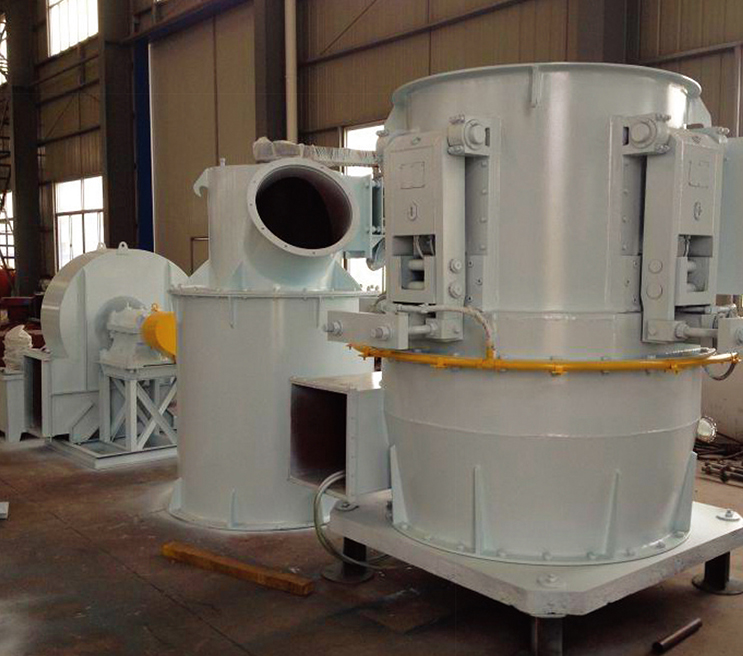For decades, ultrafine powder processing has been a cornerstone of industries ranging from pharmaceuticals to advanced materials, yet traditional grinding methods have long struggled to keep up with increasing demands. Conventional milling technologies, while once sufficient, now reveal their limitations in the face of modern production challenges. Issues such as excessive energy consumption, limited production capacity, and inconsistent particle size distribution have pushed manufacturers to seek better solutions. This growing demand has led to the development of the Intelligent Vertical Ring Roller Mill, a revolutionary advancement that is changing the landscape of ultrafine powder processing with its ability to maximize efficiency, optimize energy use, and deliver superior product quality.
Looking back, ball mills, jet mills, and conventional roller mills have each played a role in ultrafine grinding. Ball mills, though effective, suffer from high energy consumption and prolonged processing times, making them less than ideal for industries requiring fast, large-scale production. Jet mills offer finer particle sizes but at the cost of extreme energy demands, making them expensive to operate. Traditional vertical roller mills improved efficiency to some degree but were still constrained by limitations in their grinding mechanisms. The transition to smarter, more efficient technologies was inevitable. This is where the Intelligent Vertical Ring Roller Mill emerges as a game-changer, integrating multiple crushing mechanisms to achieve a level of refinement that traditional mills simply cannot match.
The secret behind the success of the Intelligent Vertical Ring Roller Mill lies in its unique combination of impact, extrusion, and grinding forces. Unlike conventional mills that rely on a single grinding method, this advanced system uses a multi-mechanism approach to ensure complete and thorough particle reduction. The result is a more uniform, high-quality ultrafine powder with fewer processing steps and lower energy consumption. This technological advancement not only enhances production efficiency but also significantly reduces operational costs, making it a preferred choice for ultrafine powder enterprises looking to stay ahead of the competition.

Beyond performance, another reason why this new generation of grinding technology is gaining traction is its intelligent automation capabilities. Traditional mills require frequent manual adjustments, leading to inconsistencies in product quality and unnecessary downtime. In contrast, the Intelligent Vertical Ring Roller Mill incorporates smart monitoring systems that optimize grinding conditions in real time, reducing human error and ensuring stable production. This level of automation means manufacturers can achieve greater output with less labor while maintaining precise control over the fineness and quality of their end product. It’s no longer just about grinding—it’s about optimizing every aspect of production for maximum profitability.
Of course, efficiency isn’t the only concern in ultrafine powder processing; sustainability is also a growing priority. Many industries are under increasing pressure to reduce their environmental footprint, and outdated grinding technologies simply don’t align with modern sustainability goals. The Intelligent Vertical Ring Roller Mill addresses these concerns head-on by minimizing energy waste, reducing raw material losses, and producing less dust pollution compared to traditional equipment. As global regulations tighten and companies look for ways to enhance their environmental responsibility, investing in a more efficient and eco-friendly milling solution isn’t just a smart choice—it’s a necessity.
As the industry evolves, businesses that cling to outdated grinding methods risk falling behind. The need for ultrafine powders continues to grow, and with it, the demand for smarter, more efficient milling solutions. The Intelligent Vertical Ring Roller Mill represents the next stage in this evolution, offering a competitive advantage to manufacturers who recognize the importance of innovation. By improving production efficiency, lowering operational costs, and ensuring high-quality output, this cutting-edge technology is setting a new standard in ultrafine powder processing. The question is no longer whether manufacturers should upgrade but rather how soon they can make the transition to stay ahead in an increasingly demanding market.

 English
English 中文简体
中文简体 русский
русский Français
Français Español
Español عربى
عربى
